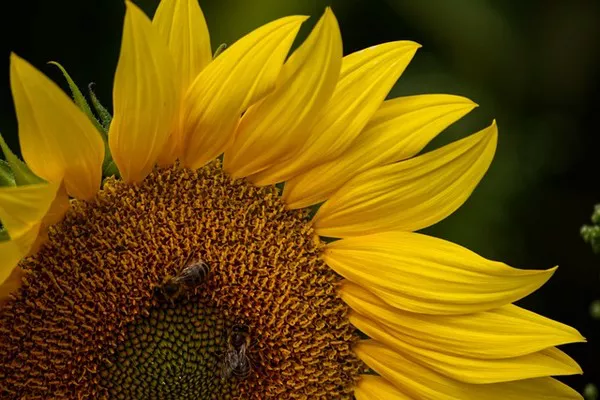Sunflowers, with their vibrant blooms and versatile uses, have captured the attention of gardeners and enthusiasts alike. Growing sunflowers from seeds can be a rewarding experience, but the journey begins with the critical step of germination. In this comprehensive guide, we will delve into the intricacies of germinating sunflower seeds, providing you with valuable insights, tips, and techniques to ensure a successful and flourishing sunflower garden.
Understanding Sunflower Seeds:
Before diving into the germination process, it’s essential to understand the anatomy of sunflower seeds. Sunflower seeds, the fruit of the sunflower (Helianthus annuus), are packed with nutrients and energy to support the initial stages of plant growth. Each seed consists of a protective outer shell, known as the seed coat, which houses the embryo—the future sunflower plant.
Step 1: Selecting the Right Seeds
Choosing high-quality sunflower seeds is the first step towards successful germination. Opt for fresh, viable seeds with intact seed coats. Avoid seeds that appear discolored, damaged, or shriveled. When in doubt, purchase seeds from reputable suppliers or harvest them from healthy sunflowers in your garden.
Step 2: Timing Is Key
Sunflowers thrive in warm weather, so timing your seed germination is crucial. Start the germination process indoors 4-6 weeks before the last expected frost in your region. This ensures that your sunflower seedlings will be robust and ready for transplanting when the outdoor conditions are optimal.
Step 3: Gather Your Materials
Gather the necessary materials for germinating sunflower seeds:
Containers: Use seed trays, peat pots, or individual seed cups with drainage holes to allow excess water to escape.
Seed Starting Mix: Create a well-draining mix by combining peat moss, perlite, and vermiculite in equal parts.
Watering Can or Spray Bottle: Maintain soil moisture without causing waterlogged conditions.
Plastic Wrap or Domes: Cover the containers to create a humid environment for germination.
Grow Lights or a Sunny Window: Ensure adequate light for seedling development.
Step 4: Preparing the Seed Trays
Fill the seed trays with the seed starting mix, leaving about half an inch of space below the rim. Lightly tamp down the soil to create a firm but not compacted surface.
Step 5: Sowing the Seeds
Place one or two sunflower seeds in each container, pushing them into the soil to a depth of about 1 inch. Cover the seeds with a thin layer of the seed starting mix and water gently.
Step 6: Creating the Ideal Environment
Cover the seed trays with plastic wrap or domes to create a greenhouse effect. This helps retain moisture and maintain a consistent temperature for optimal germination. Place the trays in a warm location, ideally between 70-75°F (21-24°C).
Step 7: Providing Adequate Light
Once the seeds germinate and seedlings emerge, remove the plastic coverings and expose the seedlings to bright, indirect light. If using artificial lights, position them 4-6 inches above the seedlings and maintain a 16-18 hour daily light cycle.
Step 8: Watering Wisely
Maintaining the right moisture level is crucial during the germination phase. Keep the soil consistently moist but not waterlogged. Water the seedlings from the bottom to prevent disturbing the delicate roots.
Step 9: Transplanting Seedlings
When the seedlings have developed their first set of true leaves and are approximately 2-3 inches tall, they are ready for transplanting. Carefully remove the seedlings from the containers, ensuring minimal disturbance to the roots, and transplant them into larger pots or directly into the garden.
Step 10: Outdoor Planting
Choose a sunny location with well-drained soil for transplanting sunflowers outdoors. Space the plants according to the specific variety you’re growing, as sunflowers can vary widely in size. Water the transplanted seedlings thoroughly, and provide support if growing tall or large-flowered varieties.
Troubleshooting Common Issues:
Damping Off: Prevent damping off by ensuring proper ventilation, avoiding overcrowding, and using sterile seed starting mix.
Leggy Seedlings: To prevent leggy seedlings, provide adequate light and maintain the recommended distance between the light source and seedlings.
Overwatering: Adjust your watering routine to prevent overwatering, which can lead to root rot and other issues.
Conclusion
Germinating sunflower seeds is a fulfilling and essential step in the journey to cultivating a vibrant sunflower garden. By following these steps and guidelines, you’ll enhance your chances of success and enjoy the beauty of sunflowers from seed to bloom. Remember, patience and attention to detail are key as you embark on this exciting gardening adventure.


